- Administrator
- Albums and Singles

Unavailable for over 10 years, this new edition of “Lebenserinnerungen Eines Lepidopterologen” (“Memoirs of a Lepidopterist”) collects the collaborative and early solo works of Andreas Martin and Christoph Heemann as an extensive 2CD retrospective.
Moving between minimalist guitar compositions, tape-music narratives, and an array of cascading electronics, each of Martin and Heemann’s solo recordings blend seamlessly within the milieu of their collaborative work.
While one can hear how this forged the groundwork for much of the late-period H.N.A.S. material, the work here took the vision further, and helped shape a path toward their respective solo endeavors. Included are compositions from their first solo releases: Martin’s “Doppelpunkt Vor Ort” (1993) and Heemann’s-“Uber den Umgang mit Umgebung and Andere Versuche” (1991), each originally released as small edition 10” vinyl. Also featured is a prime selection of previously unreleased material, obscure 7” tracks, and their collaborative opus from the (H.N.A.S.) “Ach, Dieser Bart!” LP (1988).
This deluxe set includes two additional tracks (not appearing on the previous edition), remastered audio, and fully restored visuals. All packaged in a beautiful mini-LP gatefold jacket with an updated 4-page booklet. Over 100 minutes of music covering the years 1987-2000
Read More
- Administrator
- Albums and Singles
"In the early eighties Robert Haigh released several highly acclaimed albums under the name of SEMA on his own label Le Rey Records.
The most notable being 'Three Seasons Only'. He also contributed piano and recordings to various Nurse with Wound projects including: Homotopy to Marie, Sylvie and Babs Hi Fi Companion, Spiral Insana.
The final release on Le Rey Records was his solo piano album 'A Waltz in Plain C' (CD) in 1989 and after that release Robert left London and settled in Hertfordshire.
20 years have passed since then. "Notes and Crossings" is the album that Robert has jokingly referred to as the follow up to 'A Waltz in Plain C'. "Notes and Crossings" is an album of pure piano music (with some treatments) - there is no use of percussion and electronic sequencing etc. The album is comprised of 14 pieces of written and improvised piano music, including an unreleased (but re-recorded) track from 1989 : 'Tomorrow Never Came'.
Robert says : "Piano is my real love and I am excited to have the challenge to work within the (limitless) limitations and expressions of this medium"
This is what long-time SEMA listeners expect from Robert Haigh, and will appeal to those who love works by Erik Satie, Claude Debussy and Harold Budd. In an edition 500 copies with hand-made miniature jacket sleeve designed by Faraway Press.
Siren Records is very proud to release this long awaited beautiful new album by Robert Haigh."
http://ghostsonwater.blogspot.com/
Read More
- Administrator
- Albums and Singles
SOROW is a new work by David Jackman aka Organum after completing the recent "Holy" trilogy ('Sanctus', 'Amen' and 'Omega').
SOROW is not an album that expands the trilogy still farther, but opens a new chapter in Organum's career.
On the basis of the European organ drones and the Indian Tanpura foundation, the gentle Japanese temple bell compliments the piece. It is neither of European Middle Age by a revisionist nor Oriental music composed from a European viewpoint. Its actions are of international minimalism and SOROW is 'Universal Music' in the true sense of the word. In an edition 500 copies with high quality gatefold sleeve designed by Jonathan Coleclough.
Read More
- Administrator
- Albums and Singles
Read More
- Administrator
- Albums and Singles
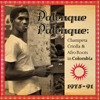 The major recurrent theme for Soundway compilations is documenting that fragile and fleeting period when two cultures collide and the resulting music still seems exciting, fresh, and revolutionary. Palenque Palenque certainly fits nicely within that aesthetic, but the absorption of African music into Colombia did not follow a predictable path all, as this is a deeply strange and somewhat baffling album (albeit quite a likable one). Rather than sounding like a Latinized Fela Kuti, some of the artists more closely resemble a young Steve Reich on amphetamines trying to construct an Afro-Latin dance album from tape loops.
The major recurrent theme for Soundway compilations is documenting that fragile and fleeting period when two cultures collide and the resulting music still seems exciting, fresh, and revolutionary. Palenque Palenque certainly fits nicely within that aesthetic, but the absorption of African music into Colombia did not follow a predictable path all, as this is a deeply strange and somewhat baffling album (albeit quite a likable one). Rather than sounding like a Latinized Fela Kuti, some of the artists more closely resemble a young Steve Reich on amphetamines trying to construct an Afro-Latin dance album from tape loops.
Champeta was born in the early '70s when soukous, highlife, and Afrobeat records started finding their way into Columbia around the same time that sound system culture was beginning to flourish.Notably, Colombians took to these new African sounds much more enthusiastically than any other country in their vicinity—in fact; co-compiler Lucas Silva is quite fond of proclaiming that Colombia was the first (only?) "Afrobeat nation" outside of Africa.This seeming anomaly actually has some very logical roots, as the north coast of Colombia featured quite prominently on the slave trade route and gradually became home to many displaced Africans who resisted completely assimilating themselves into Columbian culture.
Naturally, covering the hottest African music of the day quickly became quite a common practice for musicians in Cartagena and Barranquilla, but it is quite hard to fathom just how that ultimately progressed into something like Cumbia Siglo XX's "Negala Pedale," which begins with spastic auctioneer-like vocals before kicking into what sounds like a two-note locked groove.It's so ridiculous that it seems far more like a provocation than an honest attempt at a song ("Oh, you like to dance, do you? Try to dance to this, you bastards!").Unexpectedly, however, that "locked groove" aesthetic is strewn all over the rest of the album, encompassing everything: percussion, bass lines, guitar parts, and even vocals.Most of the tracks on Palenque Palenque are built are built upon endlessly repeating loops of frenzied funkiness coupled with similarly insistent call-and-response vocals.Often, the only fluid elements are the lead vocals and (maybe) some drum fills.In fact, some songs are repetitive to such a deranged degree (particularly Son Palenque) that they veer quite firmly into avant-garde territory, a truly odd place for dance music to wind up (especially when it originates from poor ghettos with a—possibly undeserved—reputation for violence).Also, it is both charming and mystifying to hear exuberant live musicians emulating loops.
The popularity of sound systems must have played an enormous role in shaping the improbable Champeta sound, as nearly all of the contributions seem to be based upon a very simple and true premise: all you need to get some asses on the dance floor and make them go wild is a great beat and a hook that becomes instantly familiar.A handful of overachievers go beyond the formula a bit and write some cool, fully-formed songs (Bandos Los Hijos De La Niña Luz, for example) or display great musicianship (like La Tromba), but most sensed that when people are having the time of their lives, they do not care what the hell is being sung or if the trombone player has sick chops.At least I hope that is the case. Otherwise, I have no explanation for the cartoonish duck impressions in "La Negra Kulende" or the onomatopoeic gibberish of "Burumburumbum."
On one hand, it is pretty easy to see why Champeta's popularity was relatively brief and highly localized and why Silva and Soundway's Miles Claret had to do quite a bit of scavenging to assemble this album, as dance music has a definite sell-by date and always falls victim to the next cool thing that comes along.Also, sometimes aggressive Latin rhythms make me feel like I am trapped in an elevator with a hyperactive child.On the other hand, however, it is abundantly evident why Silva has dedicated his life to preserving this music (he runs a Champeta-centric label of his own): Colombia has a thoroughly vibrant, weird, raucous, and unique musical legacy that almost no one has had a chance to hear.Palenque Palenque makes me very nostalgic for those wonderful days when wild and creatively fertile new scenes could still erupt and flourish in cultural isolation, vanish before becoming lame or commodified, then resurface to startle people like me several decades later.
Samples:
- La Nelda Pina – El Sucusu
- Cumbia Siglo XX – Naga Pedale
- Banda Los Hijos De La Niña Luz – Dejala Corre
 
Read More
- Administrator
- Albums and Singles
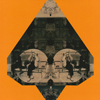 This piece for two pianos and a viola was one of the last pieces Luc Ferrari wrote and this recording documents its posthumous premiere along with a rehearsal performance. The two sides of this LP demonstrate that Ferrari was by no means running out of steam by the end of his life. The music as captivating as any of his other works for conventional instrumentation. Tense, violent and beautiful, Didascalies 2 is a potent reminder of Ferrari’s talent as a composer.
This piece for two pianos and a viola was one of the last pieces Luc Ferrari wrote and this recording documents its posthumous premiere along with a rehearsal performance. The two sides of this LP demonstrate that Ferrari was by no means running out of steam by the end of his life. The music as captivating as any of his other works for conventional instrumentation. Tense, violent and beautiful, Didascalies 2 is a potent reminder of Ferrari’s talent as a composer.
The first side of the LP features a rehearsal performance for Ferrari’s wife, Brunhild Meyer Ferrari, and covers a lot of ground in 18 minutes. Beginning with a dual piano pulse that sounds like a number of Morse code signals copulating, the piece slowly begins to fan out as the pianists (Jean-Philippe Collard-Neven and Claude Berset) incorporate clusters of notes around the central piano motif. "Didascalies 2" is at times ferocious; an atonal pounding erupts throughout the piece which is reminiscent of some of Ferrari’s earlier scores. When Vincent Royer’s viola appears towards the end of the piece it sounds like war has broken out; the viola is an oncoming bomber making a raid as the pianos replicate the explosions on the ground.
The world premiere performance of "Didascalies 2" takes up side B and the piece takes a different trajectory despite only a day between this and the aforementioned rehearsal performance. Emerging from the same one note pulse as described in Ferrari’s score, when Collard-Neven and Berset begin to develop the piece, it does not sound as jarring as in the rehearsal (not that jarring is a bad thing). Thunderous chords erupt late in the piece as lighter, melodic refrains pour from the pianos like rain. As the storm hits fully, the violence of "Didascalies 2" becomes apparent in a very different way to the other version of the piece; these recordings highlight the power of a good performer in interpreting and realising Ferrari’s works. The viola is far more intense here, Royer sounds like he is weathering the storm with the tenacity of someone desperate to push through the floods to safety.
Not only are the performances full of vigour and deftly played but they are immaculately recorded; the pianos sound like they are in the room with me. Although, the viola does sound a little flat compared to the two pianos but it is not clear whether this is because Royer is playing that way or because he was not recorded as astutely as the pianos. Yet this is only a small problem in an otherwise terrific release.
 
Read More
- Administrator
- Albums and Singles
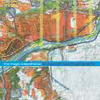 For this album the Magic Carpathians have played many roles: field guides, sonic scouts, and acoustic archaeologists investigating the musical heritage of the land they call their home. They have been applying the varnish to some improvised sessions recorded over a nearly sleepless two day period high up in a mountain lodge back in 2008. The results are like the whorls in a piece of wood picked up off the forest floor: fractal like, mesmerizing and endlessly intricate.
For this album the Magic Carpathians have played many roles: field guides, sonic scouts, and acoustic archaeologists investigating the musical heritage of the land they call their home. They have been applying the varnish to some improvised sessions recorded over a nearly sleepless two day period high up in a mountain lodge back in 2008. The results are like the whorls in a piece of wood picked up off the forest floor: fractal like, mesmerizing and endlessly intricate.
Besides being fine musicians the Magic Carpathians are also adept ethnomusicologists. Marek Styczynski has had a long standing interest in preserving musical instruments from the Carpathian Mountain region, which forms a long arc stretching across Central and Eastern Europe. Some of these, like the gajdica–a unique clarinet from Slovakia–can be heard on Acousmatic Psychogeography. Marek is interested in preserving these instruments not only as artifacts, but by bringing them into modern and electronic musical scenarios he extends their cultural reach, sustaining them longer in time; in doing this important work he finds a new audience for their sounds.
The album opens with long player "Detournament." Marek sings "faces of passing people," which forms a kind of refrain, evoking images of the flaneur. Anna Nacher further elaborates the theme, singing of "wasting time endlessly, roaming the streets, circling around, looking down." The music is perfect for the idle lounging and rambling she describes. Lazy guitar lines, fed with a bit of drive from the tube amps, meander over a thin sheet of watery loops, gradually building in distortion. The hallucinatory improv set climaxes with sounds of frayed analog fire.
"Derive" is a psychedelic sand box of open source synthesis. Slide guitars start the affair, before graduating onwards with heavy strains on the wah-wah pedal. The flubbering bass line gels together the other musical elements, which form a kind of ad hoc bricolage. This song along with "Drifting," faithfully evince the Situationist concept of the drift. Sputtering like a late night basement session, the songs create new maps out of old territory, psychically manipulating familiar psych-rock terrains, molding and shaping it into new contours. This is accomplished not only by the inclusion of instruments like the gajdica, mentioned earlier, but also the uchiwa-daiko, a type of Japanese fan drum, dulcimer, pistiala and other unusual sound devices.
The final song, "Ley Lines," picks up where "Drifting" left off, using vocal loops and ethnic wind instruments. The trajectory moves sideways from what is typically expected of a song, just as the old straight tracks, affectionately known as leylines among various seekers investigating Earth mysteries, allegedly connect sacred geographical sites, without recourse to modern notions of urban planning. The energy of the album is concentrated in the middle, making this closer a pleasant departure, as the last swirls of a dream moving from the unknown back into the known.
samples:
 
Read More
- Administrator
- Albums and Singles
 Two of the earliest Pole tracks from 1996 are reissued here along with4 pairs of reworkings by Stefan Betke (aka Pole) and contemporariesBurnt Friedman and Kit Clayton from his own ~scape label. Do "Raum 1"and "Raum 2" warrant ten versions? Somewhat surprisingly the answer isyes. "Raum" is German for "Space" and these guys are experts in thefield, each taking the source in different directions. The originalsare murky dub affairs with washes and crackles aplenty and steady, deepbass lines - much like everything that has followed to date on Poles"1", "2" and "3". While they're fine in their own right they do pale incomparison to the updated versions. Betke's variations (and two morenew tracks spawned from them) feature first time collaborator D. Meteo,guitarist for Submission. Everything is much more bright, clear andspacious as truncated guitar notes and riffs are abruptly weaved intothe new mixes, sometimes adding a sort of dub strum to the groove.Friedman takes the tracks into his own personal ambient jazz trajectoryby dressing them up with latin flavored percussion, sliding bass andmore ambiance. The Raum 1 Variation all but erases the original by thefinal few minutes of its graceful decay. And last but not least,Clayton's cut and paste treatment clutters up the static and rhythmsover time making for the busiest mixes of all. Nice variety. Perhaps"R" is a precursor of new ideas for the next Pole album proper? I hopeso ...
Two of the earliest Pole tracks from 1996 are reissued here along with4 pairs of reworkings by Stefan Betke (aka Pole) and contemporariesBurnt Friedman and Kit Clayton from his own ~scape label. Do "Raum 1"and "Raum 2" warrant ten versions? Somewhat surprisingly the answer isyes. "Raum" is German for "Space" and these guys are experts in thefield, each taking the source in different directions. The originalsare murky dub affairs with washes and crackles aplenty and steady, deepbass lines - much like everything that has followed to date on Poles"1", "2" and "3". While they're fine in their own right they do pale incomparison to the updated versions. Betke's variations (and two morenew tracks spawned from them) feature first time collaborator D. Meteo,guitarist for Submission. Everything is much more bright, clear andspacious as truncated guitar notes and riffs are abruptly weaved intothe new mixes, sometimes adding a sort of dub strum to the groove.Friedman takes the tracks into his own personal ambient jazz trajectoryby dressing them up with latin flavored percussion, sliding bass andmore ambiance. The Raum 1 Variation all but erases the original by thefinal few minutes of its graceful decay. And last but not least,Clayton's cut and paste treatment clutters up the static and rhythmsover time making for the busiest mixes of all. Nice variety. Perhaps"R" is a precursor of new ideas for the next Pole album proper? I hopeso ...
samples:
Read More
- Administrator
- Albums and Singles
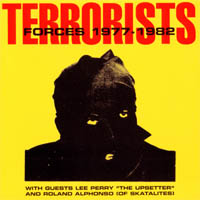 Living in Boston I have become quite jaded towards ska. As a teenager,I was into the Two-Tone scene but after moving to a scene flooded withobnoxious punks, skins, plaid clothing and Doc Martens, I found myselfextremely agitated and had to distance myself. Hearing a slice of oneof the originals years later is very refreshing and I've found myselfactually coming around to the style again. Terrorists were originals ina few respects - first off they predate the Specials, the Beat andSelecter by a couple years. Next up, while you can kind of/sortof/almost but not quite hear the reggae and punk influences on most ofthe more popular acts, it's clear as day with the Terrorists. Thequartet was based in NYC, played the punk circuit, were confined to arough sound due to their financial position and often played behindvocals from Lee "Scratch" Perry and Roland Alphonso of the Skatalites.This collection, out now on ROIR will probably be faced with adifficult time entering record stores due to the group's name, but weneed to try to rest the hypersensitivity, especially when it comes froma group who hasn't recorded anything in nearly twenty years.
Living in Boston I have become quite jaded towards ska. As a teenager,I was into the Two-Tone scene but after moving to a scene flooded withobnoxious punks, skins, plaid clothing and Doc Martens, I found myselfextremely agitated and had to distance myself. Hearing a slice of oneof the originals years later is very refreshing and I've found myselfactually coming around to the style again. Terrorists were originals ina few respects - first off they predate the Specials, the Beat andSelecter by a couple years. Next up, while you can kind of/sortof/almost but not quite hear the reggae and punk influences on most ofthe more popular acts, it's clear as day with the Terrorists. Thequartet was based in NYC, played the punk circuit, were confined to arough sound due to their financial position and often played behindvocals from Lee "Scratch" Perry and Roland Alphonso of the Skatalites.This collection, out now on ROIR will probably be faced with adifficult time entering record stores due to the group's name, but weneed to try to rest the hypersensitivity, especially when it comes froma group who hasn't recorded anything in nearly twenty years.
samples:
- Guerilla Priest (with Lee "Scratch" Pery)
- Hail the Day
- Bitch Slapped
Read More
- Administrator
- Albums and Singles
 The Amsterdam-based CD shop owner Elisabeth Esselink has deliveredanother bopping poppy soda-jerking sound-clashing long player as Solex.The new album is full of 15 peculiar yet captivating songs and is notyour regular haphazard clumsy mess. According to Matador's website,'Low Kick and Hard Bop' won out the title of this album, which also had'A Cross Between Cyndi Lauper and Early SPK' in the running. (You canguess which one would get my vote.) Esselink is asinger/multi-instrumentalist and clearly has a huge record collectionwhich probably dwarfs the one of Four Tet's Kieran Hebden. Bizarre,obscure samples combine with her playing and singing in a remarkablydemented world of tv game shows, Incredibly Strange Music collections,Hank Williams, Nancy Sinatra, Don Ho, and Herb Alpbert. Picture a crowdof awkward Dutch kids in blue jeans dancing messily around a 1950sburger shop. It's a world of big bright lights and loud colors, hairtossing and skirt twirling. Esselink proves she's not just anothersampladelic diva, but she is a pretty face too! I'm sure she takes herjovial art quite seriously and I can't wait to see her live again thisNovember where I ask her to be my wife. Check out www.solex.net for a really cool site and tour dates.
The Amsterdam-based CD shop owner Elisabeth Esselink has deliveredanother bopping poppy soda-jerking sound-clashing long player as Solex.The new album is full of 15 peculiar yet captivating songs and is notyour regular haphazard clumsy mess. According to Matador's website,'Low Kick and Hard Bop' won out the title of this album, which also had'A Cross Between Cyndi Lauper and Early SPK' in the running. (You canguess which one would get my vote.) Esselink is asinger/multi-instrumentalist and clearly has a huge record collectionwhich probably dwarfs the one of Four Tet's Kieran Hebden. Bizarre,obscure samples combine with her playing and singing in a remarkablydemented world of tv game shows, Incredibly Strange Music collections,Hank Williams, Nancy Sinatra, Don Ho, and Herb Alpbert. Picture a crowdof awkward Dutch kids in blue jeans dancing messily around a 1950sburger shop. It's a world of big bright lights and loud colors, hairtossing and skirt twirling. Esselink proves she's not just anothersampladelic diva, but she is a pretty face too! I'm sure she takes herjovial art quite seriously and I can't wait to see her live again thisNovember where I ask her to be my wife. Check out www.solex.net for a really cool site and tour dates.
samples:
Read More
- Administrator
- Albums and Singles
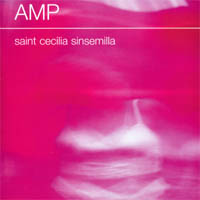 It has been three years since the last Amp (proper) full-lengther, the phenomenal 'Stenorette' release on Kranky (produced by Robert Hampson of Main). Since then, there have been a couple releases as A.M.P. Studio (but don't ask me to describe the distinction between entities). While the world awaits another full-length masterpiece, the group has decided to collect recordings made on the road during their 1998/99 European tour, from in-studio performances at AJZ radio in Switzerland and the famed VPRO in the Netherlands.
It has been three years since the last Amp (proper) full-lengther, the phenomenal 'Stenorette' release on Kranky (produced by Robert Hampson of Main). Since then, there have been a couple releases as A.M.P. Studio (but don't ask me to describe the distinction between entities). While the world awaits another full-length masterpiece, the group has decided to collect recordings made on the road during their 1998/99 European tour, from in-studio performances at AJZ radio in Switzerland and the famed VPRO in the Netherlands.
Of the ten songs included, four I can recognize from both 'Stenorette' and 1997's 'Astralmoonbeamprojections'. In addition to the older tunes, the group has provided somewhat of a rough blueprint for the next recordings.
Amp's sound has always been rather difficult to categorize, whether they're making an attempt at dreampop, a blissful wall of sound, or gritty and abrasive guitar wash with samples. While the group are considerably limited to both gear and production due to the nature of these recordings, it's no easier to sum up the sounds. Common characteristics include earth-rumbling bass, disconnected looping drums and heavily distorted guitars underneath the caustic vocals of miss Karine Charff. From a low rumble to blood curdling shrieks, it's almost puzzling how dark and almost goth-like this can get while incorporating old sounds of primitive gear and effects — think early 1970s Pink Floyd noodle-roni — while their main crowd tends to be the more peculiar indie rock kids.
Have they played at Terrastock yet? Tom the Fish is calling this the best record of the year, while I'm now salivating for the next fully realized Amp (studio) album.
samples:
 
Read More


